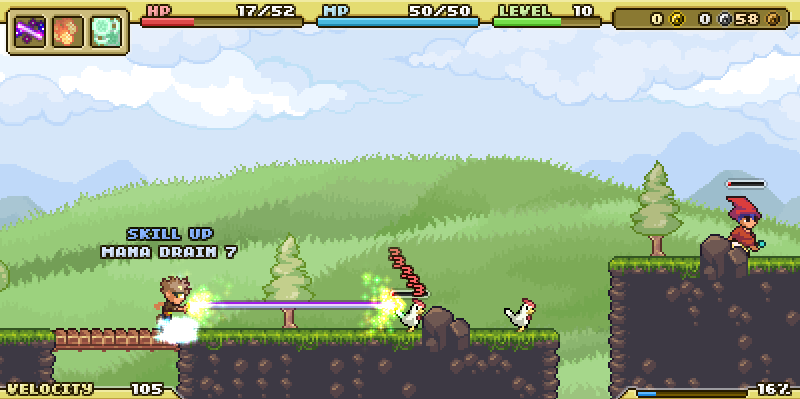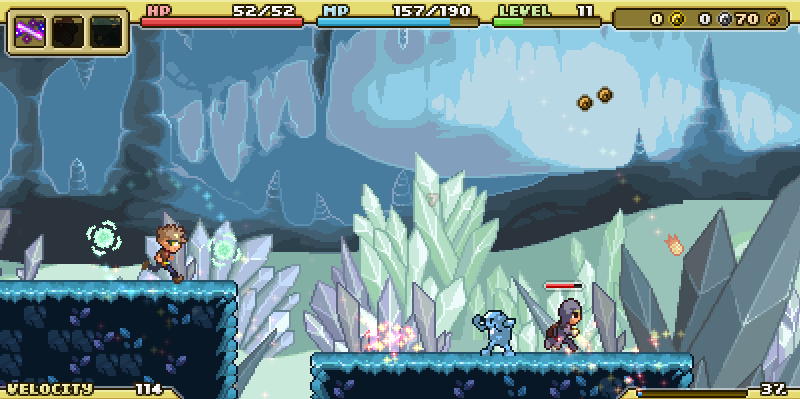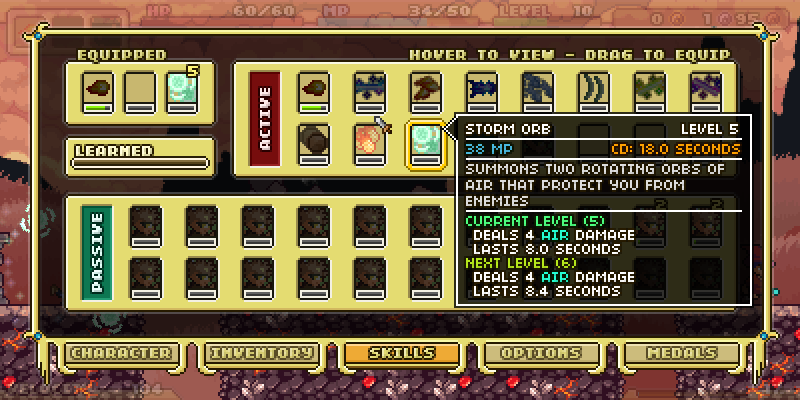Terminal
by arkeus
In preparation of building new features for Axel I started a basic rewrite of Runworlds, my autorunner rpg. It was going to just be a simple prototype using the new graphics such that I had a playground to test new Axel features. And then I got carried away and it became a full project (sorry Diamond Hollow 3 fans, I haven’t forgotten about you, you’re just locked in the side cupboard for now until I finish this).

Quick rundown: Terminal. It’s an autorunner. It’s the end of the world. Your goal is to reach the Stargate built long ago in Finality to escape the planet before it’s destroyed (the monsters have drained the planet dry of it’s life energy and it’s going to implode). As you run you face off against hordes of enemies as they also try to escape. You’ll gain levels, find items and gold, learn new spells, etc. The name Terminal is kind of a mix of the fact that it’s the end of the world (the world is terminal) and terminal velocity.

Just wanted to show you what it currently looks like. I’m trying to finish it as soon as possible, mostly because it was supposed to be a tiny side project, but it’s completely taken over my free time. Really looking forward to getting back to DH3 and For Fate!

I’m thinking about porting it to Ouya when it’s finished, but that will depend on whether or not I just want to throw it to the world and never touch it again once it’s complete.
Hey,
This game looks awesome.
But i have a question about Axel:
what kind of collision detection and response does it use?( Separating axis test and response with minimum seperation vector (lowest overlap))?
It’s similar to SAT, but simplified because all collision boxes are AABB. It also takes into account movement during collision, rather than needing any kind of integration. I also expect soon that you’ll be able to weight objects, such that when separated, if they are both moveable, they aren’t just separated the same amount, but I haven’t yet added that functionality.
Thanks for the response. Might there be some kind of tutorials or other material of your way of collision detection and response?
And is this method similar to flixel(by looking at code in felt kind of similar…)?
The method is almost identical to flixel. It uses a grid based system rather than quadtrees in order to group and determine collisions, but the response is pretty much the same. I’m not entirely sure where you’d find documentation other than simply reading through flixel or axel code.
oh. Well thanks for the reply. Then only option is to go through axel( by the way your code is way cleaner then flixel which is nice). You should make a tutorial on this subject 😀
If Diamond Hollow 3 is locked in a cupboard, does that mean that Trisphere is locked in the secret dungeon hidden away in the basement?
😉
This game looks great !
Axel is a great framework.